Happy New Year, dear reader(s). I know I was living up to the blog title just a bit excessively in the last month of this just past year; but I wasn’t just staying at home. First of all, there was Norma – the Los Angeles Opera’s production of Bellini’s classic tale of a preternaturally, anomalously powerful woman undone by that most common of invasive species. (Jeeeezzzus – ‘aren’t we bloody over the patriarchy by now?’ I was thinking as I exited the L.A. Opera’s production of Moby Dick (dreadful libretto)– or was it Matthew Barney’s gesamtkunstdreck, River of Fundament? Really – do I have to go back??) And then there was Norma – putting the bel into the canto like no other work before or since. And then I was thinking about … Norma – all the productions and recordings I’d seen or heard – and swept under all the thresholds I’ve crossed since that fateful day I first heard the Callas La Scala recording. Well … we move on. Living things do that. (Let’s hope we still can in 20 years – the Paris climate conference didn’t exactly inspire confidence. If this is what we’re dealing with given a single degree of warming, does anyone really expect anything short of apocalyptic disaster with another degree? Or two??)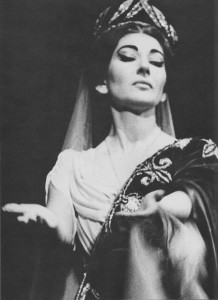
The holiday season always brings a crush of big shows – plays, especially musicals; films from holiday blockbusters to late Oscar contenders (Adam McKay’s comic spin on Michael Lewis’s The Big Short had everyone buzzing amid the global dollar fueled downtown building boom and housing bubble expanding around us and congressional Republicans aiming their artillery at Dodd-Frank); less so museum shows, though the Getty Museum’s exhibition of l6th and 17th century French tapestries, most of them commissioned for the court of Louis XIV, fairly glittered with gold and silver, and LACMA’s peerless Noah Purifoy and New Objectivity (and other:) exhibitions were gifts that kept on giving. In the meantime, there were smaller, but nonetheless substantial gallery shows that were glittering ornaments to be prized and celebrated.
On the same evening I was eagerly anticipating Jayson Musson (better known as Hennessy Youngman for those of us who have been fans of his Art Thoughtz on YouTube) and Casey Jane Ellison, the L.A. art world’s favorite stand-up (I’m still trying to get over not being invited on What the F:shion? and Touching the Art) at Steve Turner (I was too early), Diane Rosenstein opened a show that was like a giant gift box nesting, Russian doll style, yet another gift within, each opening upon some sparkling gem(s) of art – in painting, sculpture, drawings, prints, photography and other works on paper, and objects almost unclassifiable. Cumulatively, it was almost breathtaking. I ran into a prominent local curator who happened to be viewing the show at the same time I was there, and neither of us could conceal our elation. The consistent excellence of the work gives the show a kaleidoscopic, almost celebratory dazzle; yet it also touches on some of the most pressing issues of our time.
The show is titled, peace love freedom happiness; and however its spirit may or may not be carried away with the viewer into the new year, I think I can safely say the viewer will experience some moments of intense joy within the gallery’s spaces. The first of those moments is a small Sarah Awad painting, that may have been a study (or simply a smaller work) for her Gates paintings, a beautiful show Awad opened earlier in the year, that used the filigreed wrought iron gates and fences that typically surround large residential properties and estates all over L.A.’s more affluent suburbs and urban enclaves as motive and springboard for a painterly excursus into the view ‘through’ and ‘over’ implicit in both landscape and abstract conventions. The painting, “Casement” could be a kind of talisman for the series, and it’s simply exquisite.
Viewers might be familiar with the explosive quality of some of Anish Kapoor’s work – not least from his show earlier this past year at Regen Projects. But he can bring the volume down now and then; and the Rosenstein show included a beautiful suite of slightly more subdued ectoplasmic eruptions in a suite of beautiful color etchings. That muted quality connects with the Miranda Lichtenstein photographic prints and Polaroids of mostly floral and foliage subjects. Lichtenstein comes at her subjects obliquely (and sometimes from several angles simultaneously – or so it would seem). Lens, ‘filter’ (in any number of senses) and lighting may veil, distort or simply complicate the view, the surround, the atmosphere around a subject that, finally, eludes firm definition.
Nature (or a kind of counter-nature) is treated with similar ambiguity in works on paper, canvas and panels (and even sculpture) variously by Eben Goff (extensively), Jane Wilbraham, David Schafer, and Roland Reiss (including the rippling Bent Field of 1969, which has its own talismanic, almost iconic power). Each produces a kind of visual poetry that ranges analogously from the sparest haiku to elegant lyricism to the elegiac. Fissures register prominently in many of these works – in nature, in perception; and Karin Apollonia Müller’s earthbound subjects have long considered them; also the aura of ambiguity, even ambivalence that envelops the concrete – our slippery apprehensions of physical actualities. But from here, she simultaneously soars and submerges in the cosmic apprehension of our tenuous, intermittently luminous, imprint on the cosmos in the “Citylight” and “Starlight” series of lightjet prints produced from NASA/JPL telescope data transmissions for her 2013 Far Out show.
The show, which runs through January 16th, also includes work by John Adelman, Eleanor Antin, Jedd Garet and Arnold Helbling.
Something of the sublime quality of this show (as well as its larger concerns beyond the material and formal) carries over (not surprisingly) to Whitney Bedford’s strong show of painting at Susanne Vielmetter Los Angeles Projects, West of Eden, but I have to leave a more extensive discussion of the show for another post. (It’s up through January 23rd.) And as if there’s not enough of the peerlessly first-rate to be had at LACMA this last holiday week-end,: you might check out Living for the Moment, an amazing show of Japanese prints from the Barbara S. Bowman collection. To paraphrase a Masunari poem included in one of Kunisada’s woodblock prints – “Nothing can compare … not even seeing Mount Fuji in a New Year dream.”






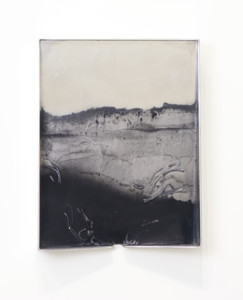

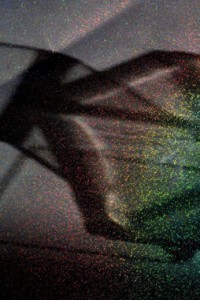
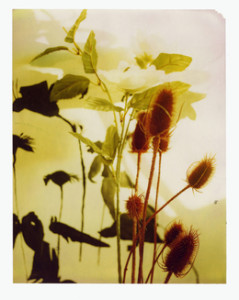
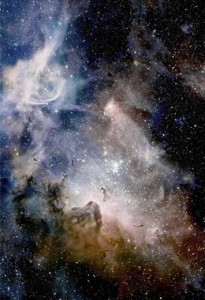
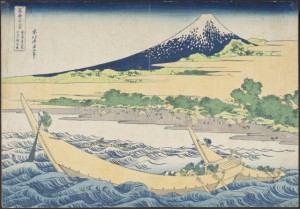













0 Comments